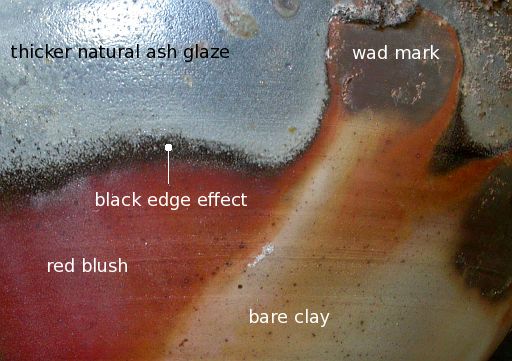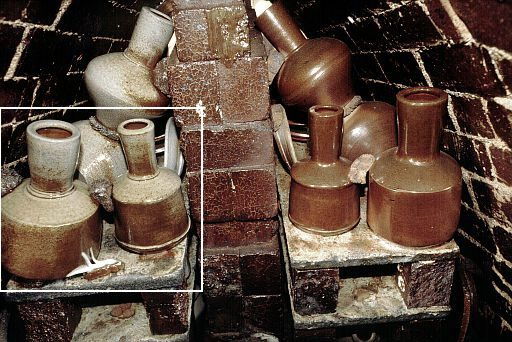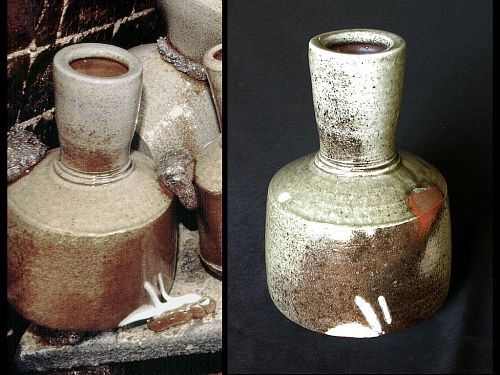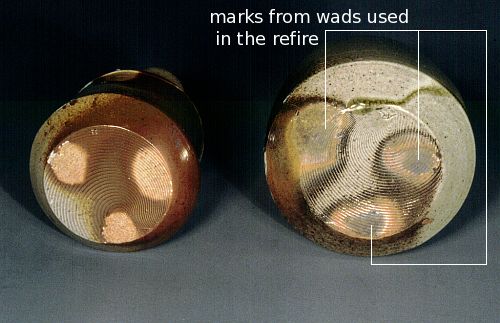|
|
Controlled Reduced Cooling 2 |
 |
Not all of the
pots in this
firing turned out to be brown. Despite our inexperience this small kiln
managed to produce half a dozen good pots.
We were at once
intrigued by the startling effects on this bottle from the Pinus carribea
firebox. The steps from bare clay through red blush to black
edge
effect, followed by increasing thicknesses of actual ash glaze are
particularly vivid here. This pattern occurs with other clays and other
species of wood.
|
| Returning to the
pots from our
first firing: the pot above and the two inside the white rectangle on
the right were made from the same clay, and subjected to the same ash
type. The pot with the cones leaning on it was refired in a small gas
kiln according to a firing schedule that I had been playing with for
some time in attempts to enhance the colors of pots previously
fired in the salt kiln, or fired with shino glazes in a gas kiln. The
effect of applying my preferred refire regime to this pot struck me as
remarkable. |
 |
 |
Some of the color differences between the before image (on the left) and the after image can be attributed to the use of color film twelve years ago and the more recent use of a digital camera, but there is no dismissing the development of a strong red blush near the wad mark, and the conversion of an unlovable brown on the left to a much more desirable dark brown or black on the right. The image below was even more promising. |
| The unrefired pot
on the left is
the bottle on the right in the white rectangle above, and the
refired, cone marked pot is on the right. Many of the
features of
the section of pot in the topmost image on this page have reappeared in
the refired pot. Most striking is the black edge effect, but the blush
around the new wad marks and the blackening of some previously brown
areas are quite clear. This seemed a clear indication that cooling
conditions were of some importance in color development. |
 |